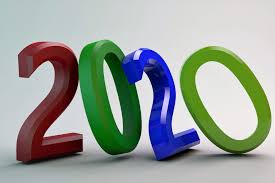 A year that saw little travel but it was a good time to write. Most would agree that this year was not what we expected. Instead of continuing with business and event travel into March, HIMSS was canceled at the last minute and converted to a virtual event. And so it went, for Argentum events and many other summits. And so it remains a virtual world. So 2020 was a year that produced 5 white papers and three long research reports emerge – normally not feasible with so much here-and-there travel. By comparison, in 2019 one report, the 2019 Market Overview, was published, along with 2 long and 4 short white papers, listed under Research. Here are the reports – looking forward to 2021!
A year that saw little travel but it was a good time to write. Most would agree that this year was not what we expected. Instead of continuing with business and event travel into March, HIMSS was canceled at the last minute and converted to a virtual event. And so it went, for Argentum events and many other summits. And so it remains a virtual world. So 2020 was a year that produced 5 white papers and three long research reports emerge – normally not feasible with so much here-and-there travel. By comparison, in 2019 one report, the 2019 Market Overview, was published, along with 2 long and 4 short white papers, listed under Research. Here are the reports – looking forward to 2021!
Voice, Health, and Wellbeing 2020. Although work is being explored in using the voice as a health diagnostic tool, most uses today are rudimentary and/or experimental. But the future is exciting. With the beginning of HIPAA-compliance, diagnostic capabilities based on voice, and increased personalization capability, Voice First technology promises to provide greater assistance to health professionals and a better experience for consumers at home. 2020 saw more entrants into this early segment, particularly in voice assistants and new health-oriented skills, refining what works and adds value. This report interview 21 pioneering health and research executives. Read more.
Technology for Aging 2020 Market Overview. In 2020, a modest category became mainstream. It took the aging of the baby boomers and the sheer size of the aging population to turn a 2009 market niche into a 2020 major market category. That category is less about products specifically designed for older adults as it is about the marketing of many existing offerings as useful to them. This includes smartphones, tablets, smart home technology, Voice First hardware and virtual assistants, and in-home sensors. Each of those devices is enabled for older adults by either more targeted marketing and packaging, enabling software, or bundling into solutions for in-home caregiving and/or healthcare. Read more.
The Future of Remote Care Technology and Older Adults 2020. The pandemic catalyzed simultaneous innovation efforts on multiple fronts – many of the initiatives will become fixtures within the emerging remote care technology ecosystem. This report, s with 30 senior executives across health, senior care, technology and policy, examines negative impact of the pandemic on seniors and the technology market that is attempting to provide solutions. Blending years of analyst experience and more than a decade of in-depth research on the older adult technology market, this forward-looking study is illustrated with descriptive graphics, predictions, and quotations from interviewees. Read more.

 A year that saw little travel but it was a good time to write. Most would agree that this year was not what we expected. Instead of continuing with business and event travel into March, HIMSS was canceled at the last minute and
A year that saw little travel but it was a good time to write. Most would agree that this year was not what we expected. Instead of continuing with business and event travel into March, HIMSS was canceled at the last minute and